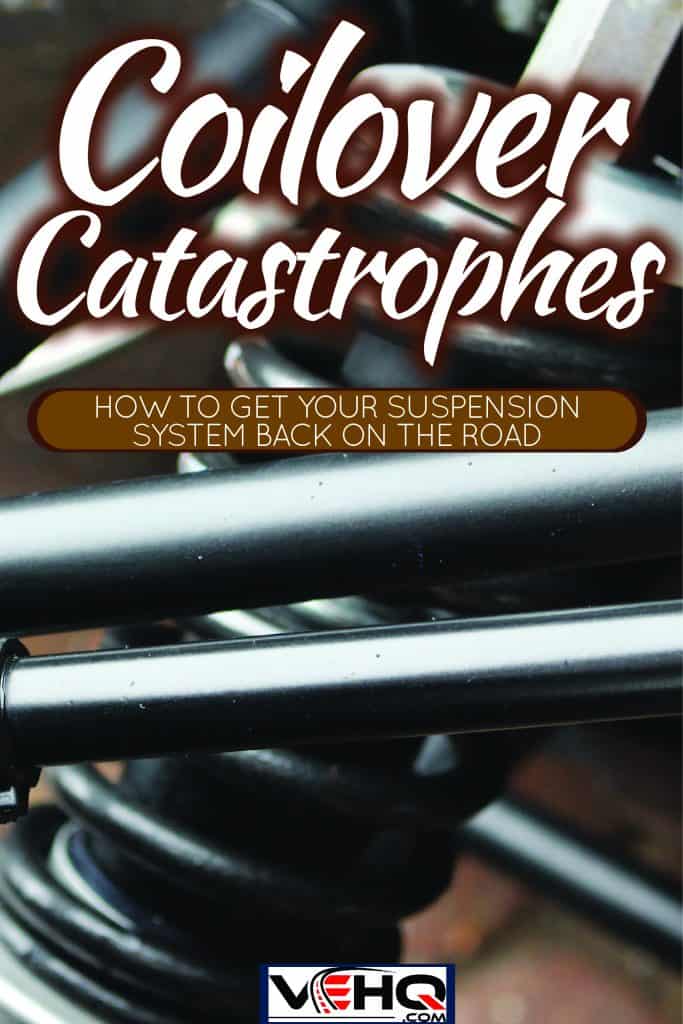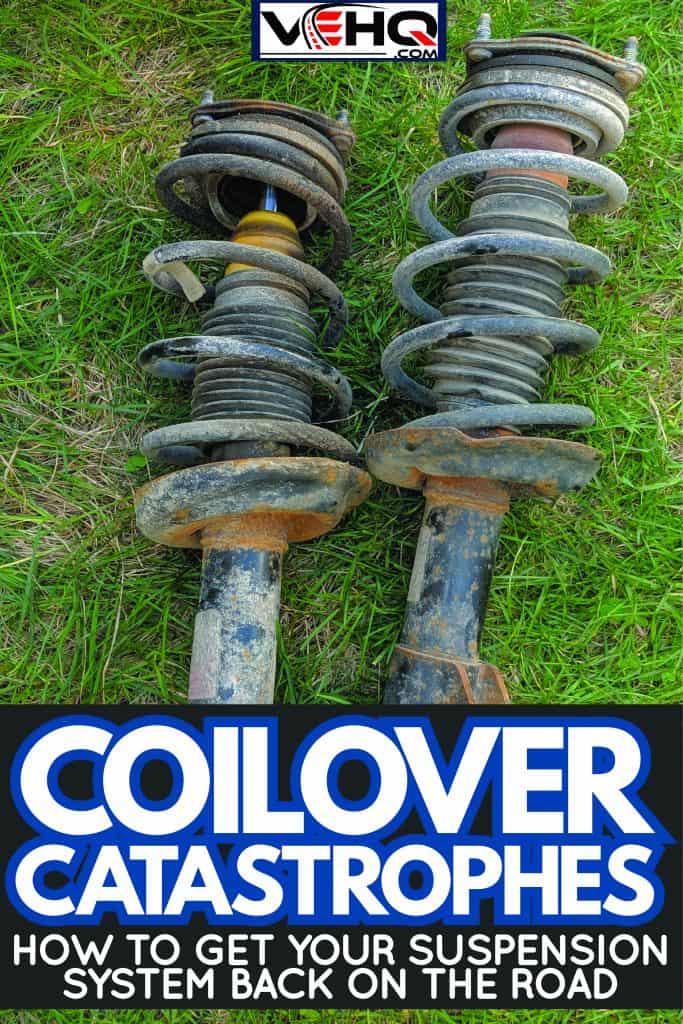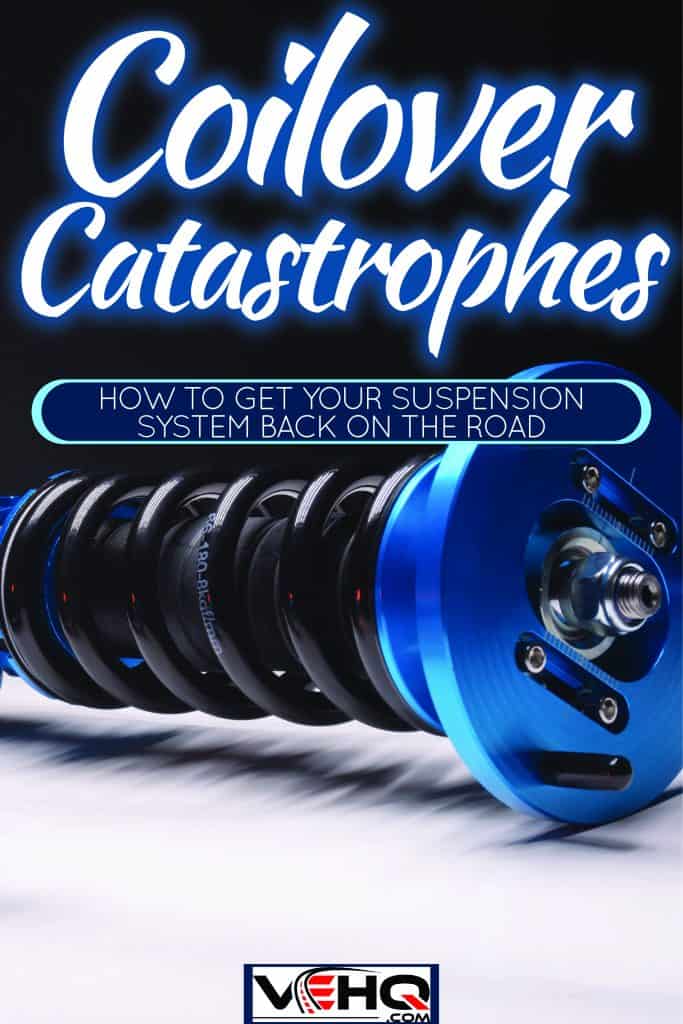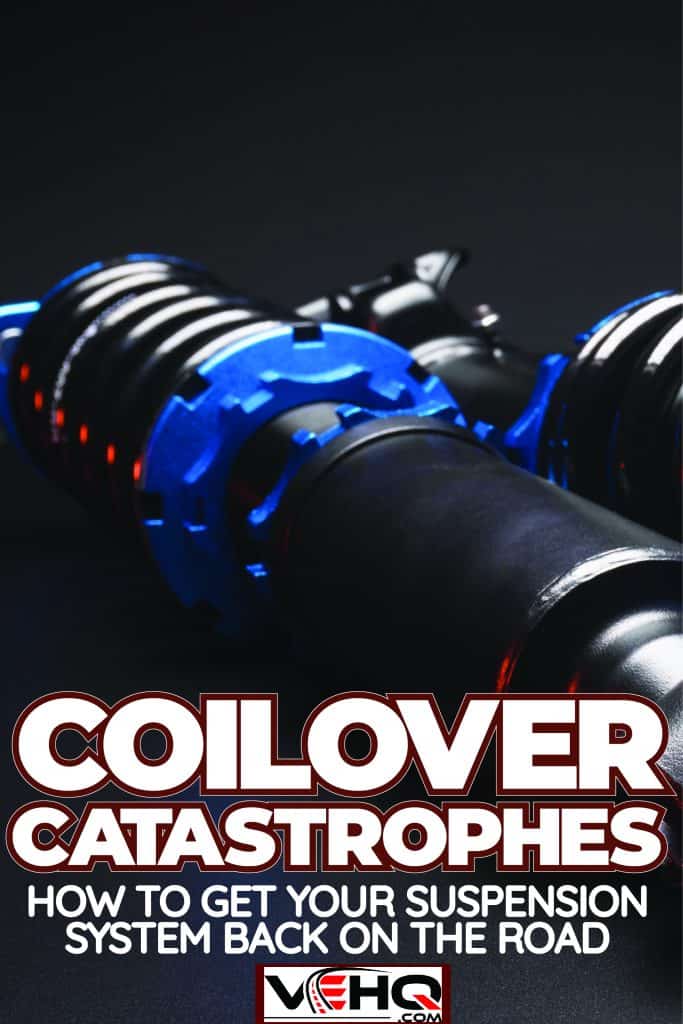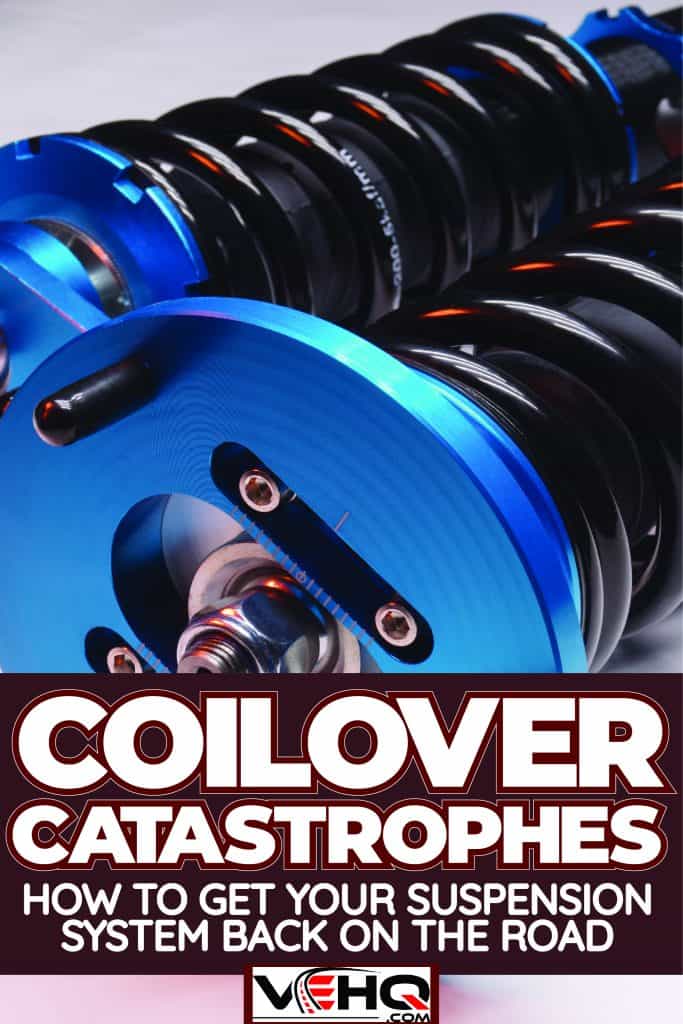Are you experiencing a bumpy ride due to a blown coilover? Are you worried about the cost of fixing it? Well, worry no more because we've got you covered!
We know that fixing a blown coilover can be daunting, but we're here to help you navigate it.
In this article, we'll dive deep into the world of coilovers, exploring the symptoms of blown coilovers and discussing potential solutions to get your vehicle back in its prime condition.
We'll also be covering whether seeking professional assistance from workshops is the best option or if you can tackle the repair yourself.
We want to ensure you have all the knowledge needed to make an informed decision.
So, buckle up and join us on this informative journey as we uncover the ins and outs of fixing blown coilovers. Trust us; this is a ride you don't want to miss!
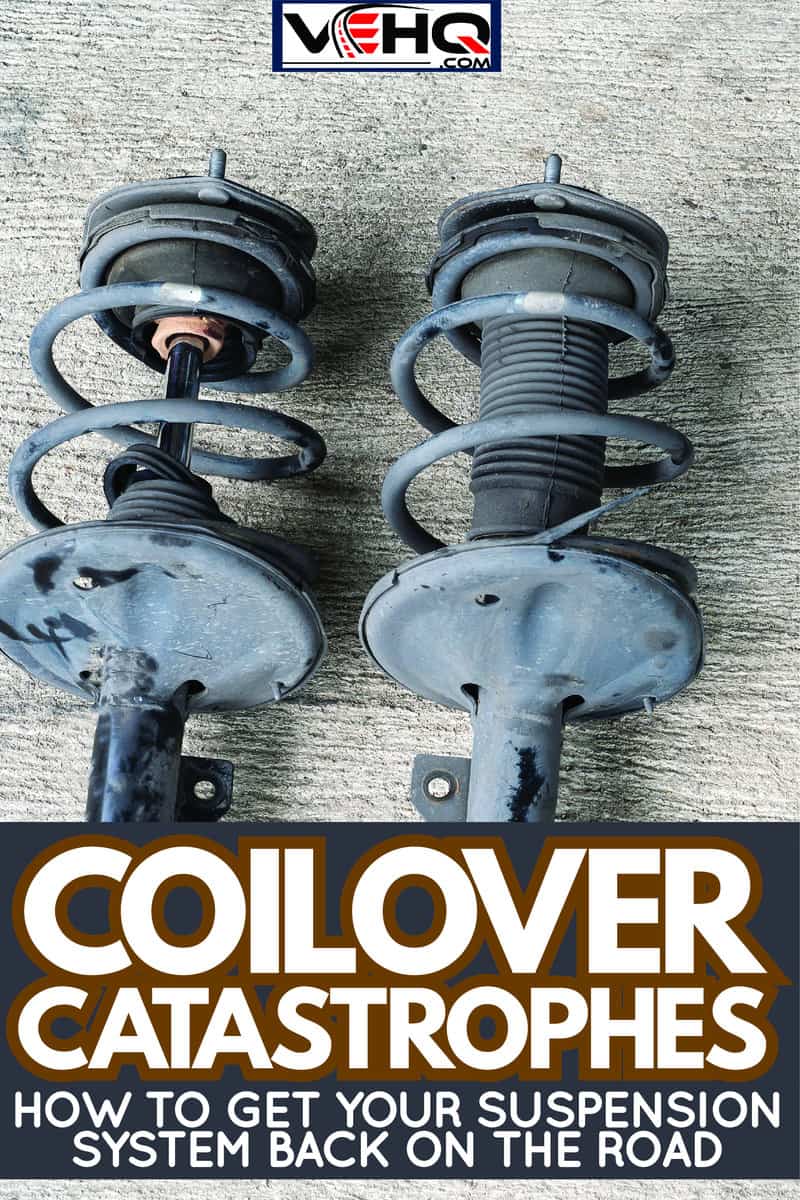
Can You Fix a Blown Coilover?
Most drivers may not realize that coilover shocks can be replaced without replacing the entire coilover system. With the right tools and technical know-how, one can fix a blown coilover without much hassle.
Following these step-by-step instructions saves drivers time and money on expensive workshop repairs.
Occasionally, coilovers may emit noises, such as clunks or squeaks. In some cases, these noises can be resolved through proper maintenance.
For instance, greasing the threaded part of the shock body with anti-seize can help prevent clunking and creaking sounds.
You might also like: Coilover Confusion: What Causes Coilovers To Squeak?
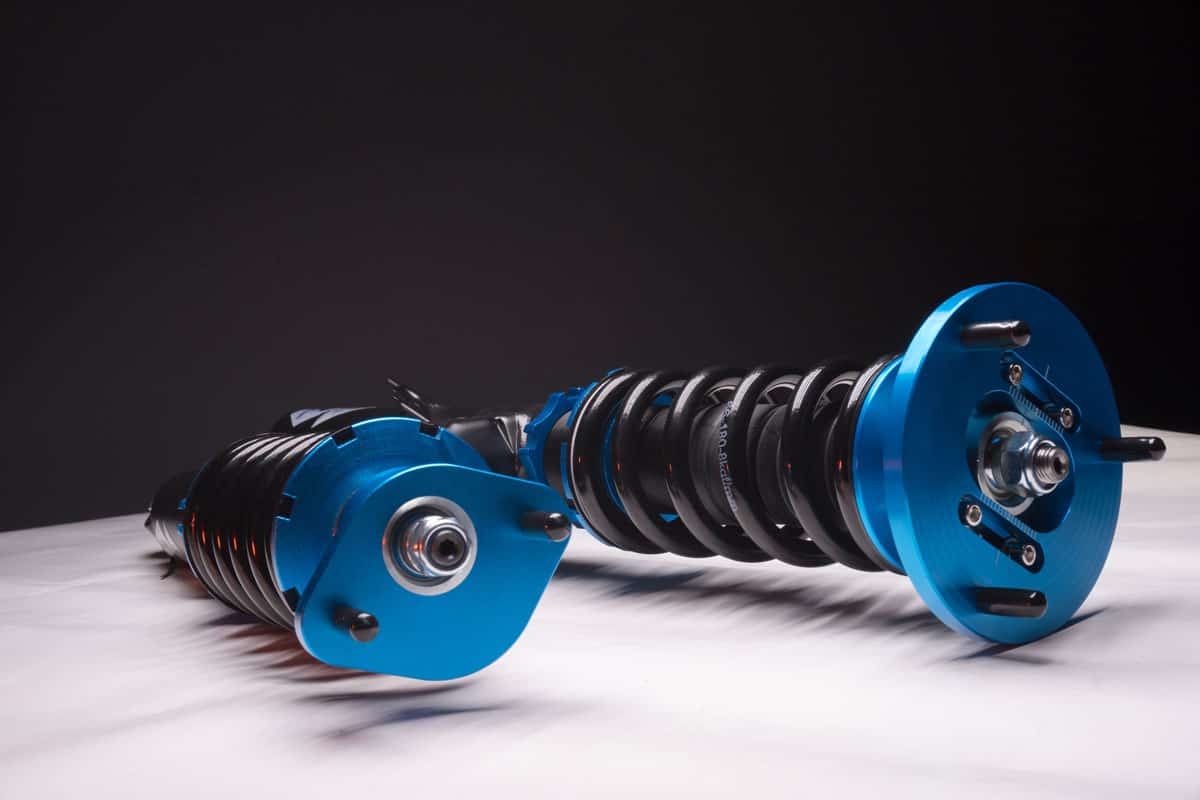
While it's possible to fix a blown coilover yourself, those not mechanically inclined may opt to visit a professional workshop.
This ensures that the coilover issues are resolved by experienced technicians, which can ultimately save drivers from further costly repairs.
Fixing a blown coilover can be a simple process for those with mechanical skills.
Utilizing online resources and proper maintenance can extend the life of your coilover system, keeping your vehicle safe and efficient.
How to Diagnose a Broken Coilover
Identifying a broken coilover starts with observing your vehicle's behavior. Unusual noises, uneven tire wear, or excessive bouncing can indicate a blown coilover.
Next, look for leaks in the coilover. Hydraulic fluid or oil leaks are common signs of failure with the unit.
Inspect the coilover for any deformities, such as cracks or bent components. Damage to these parts can lead to compromised suspension performance.
Perform a bounce test by applying body weight to the side of the suspected damaged coilover. A significant bounce indicates a potential issue with the coilover.
Analyzing suspension noises, such as clunking or squeaking, can reveal signs of a broken coilover. Examine the unit for loose fittings or worn-out bushings causing these sounds.
Lastly, consult an expert if you're unsure. Automotive technicians or online forums can offer valuable insights and guidance for diagnosing a broken coilover.
Be sure to read: The Ultimate Showdown: Coilovers vs. Struts
How to Fix a Blown Coilover?
Blown coilovers may appear daunting, but fear not! There are ways to address this issue and restore your vehicle's ride quality. Let's dive into some simple steps to fix a blown coilover.
Firstly, identify the symptoms. A blown coilover typically results in poor ride quality, noise, and potential fluid leakage.
Once confirmed, consider the short-term solution of replacing seals and refilling them with hydraulic fluid. However, remember this is not a permanent fix.
Next, address the common issue of coilover clunk. Diagnosing and fixing coilover clunks is crucial in maintaining a smooth, noise-free drive. Frequent checks will help prevent future concerns.
If a complete shock replacement is necessary, know it is possible to replace it yourself.
This alternative saves you from purchasing a new coilover or incurring the cost of professional rebuilding. Confidence and a little research go a long way!
For coilovers clunking or creaking, some routine maintenance may be needed. Uninstalling and greasing coilovers using anti-seize, which prevents rust and clunking, might resolve the issue.
Finally, to replace a blown coilover shock, ensure care is taken when transferring top mounts and tightening nuts on the shock shaft. Avoid holding the shock shaft with tools that may cause damage.
Addressing blown coilovers may seem challenging, but with patience, knowledge, and a bit of DIY spirit, you can drive smoothly again.
Remember to conduct regular maintenance and care to keep future issues at bay. So, buckle up, and enjoy a clunk-free ride!
You might also like: The Best Coilovers for a Smooth Daily Drive: User Guide
When to Know if Coilover Needs Replacement?
Knowing when to replace a coilover is crucial for maintaining optimal vehicle performance. Some common symptoms may indicate a need for replacement.
Bouncing over speed bumps can clearly indicate that the coilovers are blown. When a car's suspension becomes more bouncy than usual, it's time to inspect the coilovers.
Visible oil leakage is another warning sign. If you notice oil seeping from the coilover, it's likely damaged and needs attention.
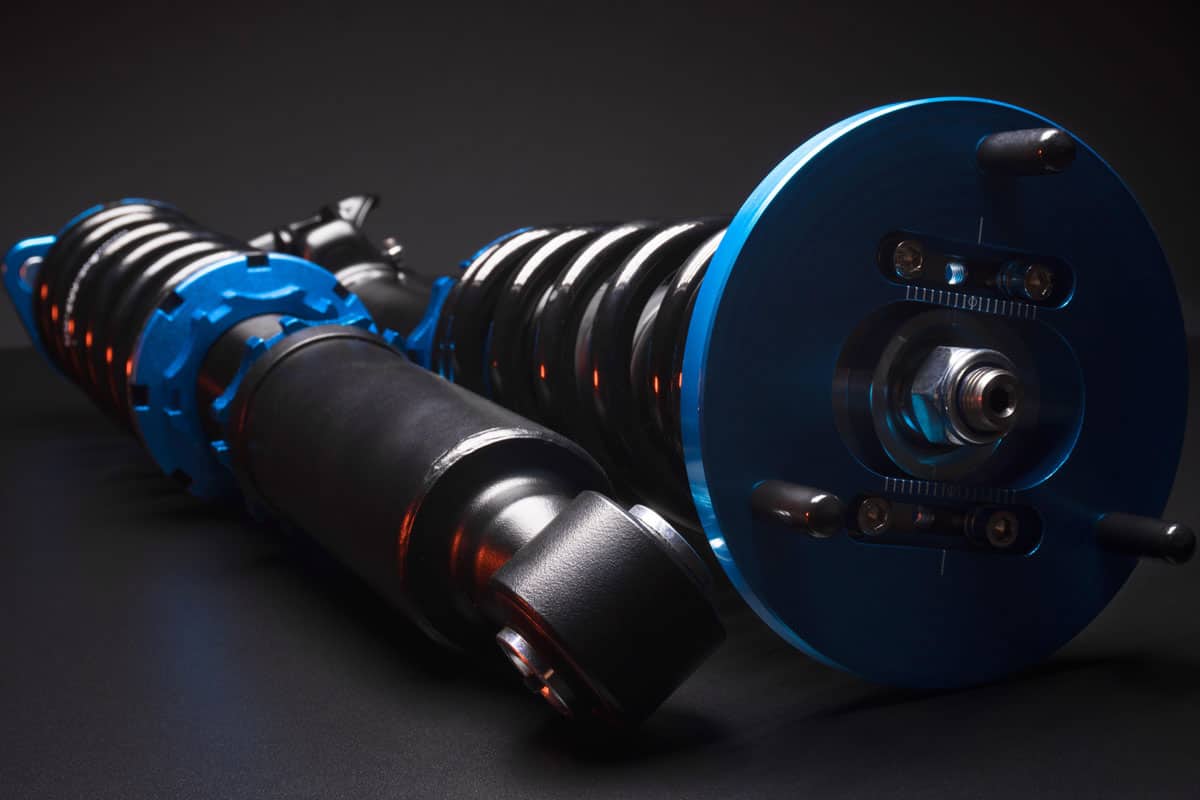
Increased body roll when cornering is also a possible symptom. As the coilover loses its damping ability, the car will exhibit more body roll during turns.
Coilover clunking noise is an issue to be addressed as well. A noisy coilover can hinder your vehicle's overall stability and quality of the ride.
In case of structural damage to the upper or lower bearing of the coilover, replacing them might be essential. If this is not possible, consider replacing the entire coilover instead.
When these symptoms arise, it's best to consult a professional and replace the damaged coilover shock. Timely maintenance ensures a safe and enjoyable driving experience.
Learn more: Coilovers: The Good, the Bad, and the Ugly – How Long Do They Really Last?
How to Replace a Blown Coilover?
When experiencing a blown coilover, knowing how to replace it correctly is crucial. Following a step-by-step procedure ensures a smooth and efficient process.
Coilover replacement can significantly improve your vehicle's performance and ride quality.
Begin by safely ">jacking up your vehicle and removing the wheel to access the coilover assembly. It's essential to follow proper safety measures while working on your car.
Once the wheel is removed, start loosening the bolts and nuts connecting the Coilover to the vehicle's suspension system. Be cautious not to damage any surrounding components during this process.
After removing the bolts, carefully take out the damaged coilover. Ensure no debris or damaged parts remain behind, as these could interfere with the new Coilover installation.
Acquire the replacement coilover and ensure it is compatible with your vehicle. Prepare the new coilover by transferring top mounts from the old unit, while not damaging the shock shaft or any other components.
Install the new coilover into the suspension system by aligning it with the mounting holes. Once aligned, tighten the bolts and nuts accordingly, ensuring a secure fit.
Reinstall the wheel and carefully lower your vehicle back to the ground. Perform a test drive to confirm the installation's success and assess the improved ride quality.
Remember, when replacing a blown coilover, it is essential to follow proper safety measures and installation techniques. Improper installation could lead to further complications or damage.
How Much Does a New Coilover Cost?
When it comes to coilovers, a wide range of prices can be found, depending on the brand and type you choose.
Generally, you can expect to spend between $200 to over $3,500 for a set of coilovers. Keep in mind that several factors influence the overall cost.
Check out these coilover kits on Amazon.
On the lower end, some brands offer entry-level coilovers tailored for daily drivers and budget-conscious enthusiasts.
There are some affordable options out there, but be careful as the quality may not be the same.
For the ultimate coilover performance, enthusiasts can expect to spend well over a thousand dollars for high-end options.
These coilovers typically cater to track use, race cars, or those seeking the best possible performance at any cost.
It's crucial to note that additional expenses such as alignment, professional installation, and proper maintenance may also contribute to the overall cost of coilover ownership.
Researching and comparing various brands' features, warranties, and reputations will help ensure you select a coilover set that meets your needs within your budget.
You might also like: Coilover Installation In An Acura ILX – How To
Can You Drive with a Blown Coilover?
Driving with a blown coilover is technically possible, but it has drawbacks and is not recommended. While some drivers opt to drive their vehicle to a workshop or back home carefully, caution is advised.
By driving slowly and avoiding potholes or bumps, the risk of further damage is minimized.
Blown coilovers can negatively impact the overall driving experience, as the suspension can no longer effectively absorb impacts.
This reduced shock absorption can make driving feel like riding on a boat. Despite the inconvenience, it's essential to prioritize fixing the issue as soon as finances permit.
In the meantime, drivers may find temporary relief by replacing a shock. DIY enthusiasts, in particular, can save time and money by replacing the shock themselves.

However, it's worth noting that this should only be considered a temporary solution until a professional repair can be arranged.
Preventative measures should be taken to prolong the life of coilovers and avoid blown coilovers altogether.
This includes regularly applying anti-seize to the threads to protect them from salt and rust.
Although no amount of precaution can guarantee a problem-free ride, regular care can minimize blown coilovers occurrence.
How Long Do Coilovers Last?
Coilovers, an essential part of a vehicle's suspension system, are built to be durable and long-lasting. But how long can you expect them to hold up under usual driving conditions?
A set of high-quality coilovers, when installed and maintained correctly, can last an impressive 150,000 miles or more.
Factors such as the type of material used for the springs and shocks play a role in determining their longevity.
Maintaining your coilover suspension system is vital to ensuring its long life. Regular inspections and timely repair of any issues can extend the lifespan of your coilovers.
Remember that driving conditions and usage patterns influence the longevity of coilovers. For instance, harsh road conditions or regular off-road driving may wear down coilovers faster than smooth highway drives.
It's worth noting that when a coilover is blown or damaged, replacing the shock rather than the entire unit is often possible, saving you time and money.
So, while coilovers are designed to last, proper care and consideration of driving conditions will ensure they remain functional for many years.
Suspension System Components
The suspension system is a vital part of any vehicle, responsible for comfort and handling. This section discusses several key components that make up this intricate system.
Sway bars, sometimes called anti-roll bars, are essential for stabilizing a vehicle during turns.
They help to control body roll and maintain a more even weight distribution across the tires, which leads to better traction and handling.
Control arms are another critical suspension component. They connect the wheel hub to the chassis, allowing wheel movement while maintaining proper alignment.
Ball joints and CV joints facilitate this movement while also providing pivoting points that let the wheels steer and accommodate suspension travel.
Regarding suspension travel, droop travel refers to the distance a wheel can move downward relative to the vehicle's chassis.
This range of motion is crucial for maintaining tire contact with the road when driving over uneven terrain or during cornering.
Shock towers house the upper mounting points of a vehicle's shock absorbers. These structures serve as anchor points for the coilovers, allowing them to manage the forces generated during driving.
Rebound is an essential aspect of a vehicle's suspension performance. It refers to the speed at which a shock absorber returns to its original position after being compressed.
A controlled rebound ensures a smooth ride and helps maintain stability and traction.
Camber plates enable adjustments to the angle of the wheels relative to the road surface. By altering the camber, drivers can optimize tire contact and improve cornering performance.
Understanding these vital suspension components is essential for maintaining a vehicle's performance, comfort, and handling characteristics.
Remember to keep an eye on each of these parts, ensure they're in good working order, and always consult a professional when dealing with complex repair or modification tasks.
Be sure to check out: Active Suspension Vs Passive Suspension – What’s The Difference?
Coilover Maintenance Tips
Regular coilover maintenance is essential for ensuring their longevity and optimal performance. Here are some practical tips to help you maintain your coilovers effectively.
Check for signs of wear and tear regularly. Inspect the coilover springs, bushings, and shock absorbers for visible damage, dents, or leaks.
Early detection can make a significant difference in performance and safety.
Clean your coilovers periodically. Remove dirt and debris that has accumulated around the coilovers. This prevents premature wear and corrosion.
Use a soft brush and a mild cleaning solution to clean the components gently.
Grease your coilovers to prevent clunking and creaking noises. When you notice noise from your coilovers, it may be due to a lack of lubrication.
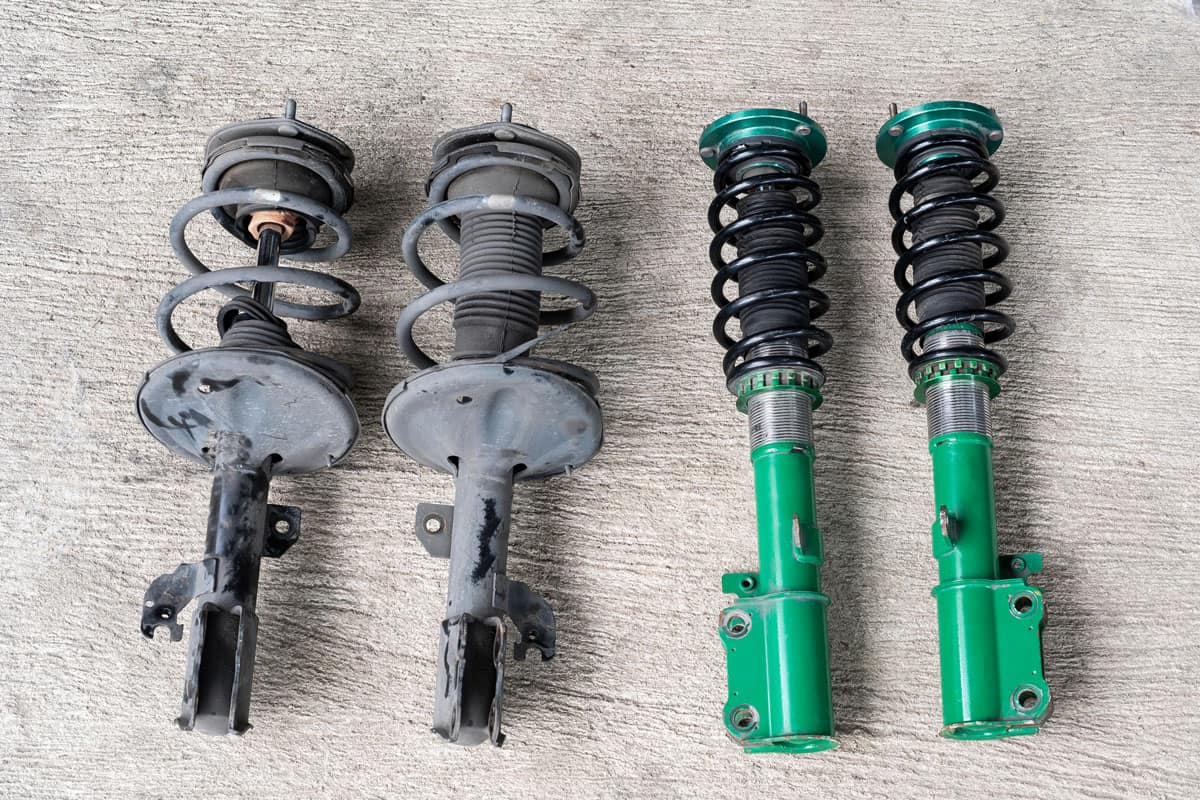
Apply anti-seize grease to the threaded part of the shock body and rotate the adjustment coilovers to work it into the threads.
Tighten your bolts and nuts. Loose components can cause instability while driving. Ensure all mounting points are securely tightened, and check them regularly.
Rotate coilover springs occasionally. This helps to distribute wear evenly across the spring surface and can extend their life. Look for any uneven wear patterns that may indicate an underlying issue.
Finally, always consult your vehicle's manufacturer guidelines and recommendations for maintenance intervals and appropriate servicing.
Regularly following these guidelines can help prevent blown coilovers and ensure optimal performance.
Remember that a proactive approach to coilover maintenance can save you time and money and enhance your driving experience.
Remember these tips to keep your coilovers in excellent condition for as long as possible.

